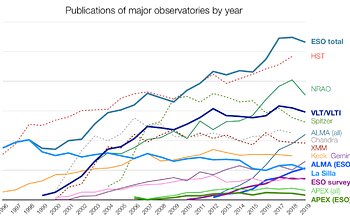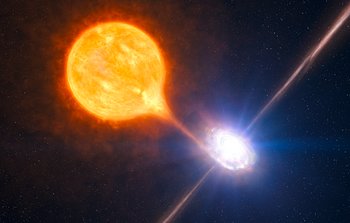Observations made with ESO’s Very Large Telescope (VLT) have revealed for the first time that a star orbiting the supermassive black hole at the centre of the Milky Way moves just as predicted by Einstein’s general theory of relativity. Its orbit is shaped like a rosette and not like an ellipse as predicted by Newton's theory of gravity. This long-sought-after result was made possible by increasingly precise measurements over nearly 30 years, which have enabled scientists to unlock the mysteries of the behemoth lurking at the heart of our galaxy.
The release, images and videos are available on:
https://www.eso.org/public/news/eso2006/
Kind regards,
The ESO Department of Communication
16 April 2020

|
9 April 2020: Science observations at ESO’s sites in Chile may have paused last month, but data collected by our telescopes in the past continues to further astronomy years after the observations ...
|
| Read more |

|
Interview with Claudia Cid
10 April 2020: ESO’s telescopes collect lots of incredible information about the Universe, but who tells them where to point and what data to collect? Claudia Cid is a Telescope Instrument Operator and ...
|
| Read more |

|
Interview with María Díaz Trigo
27 March 2020: As well as being an Operations Astronomer at the ESO ALMA Regional Centre, María Díaz Trigo is a world-renowned expert in high-energy astrophysics and lends her expertise to X-ray space ...
|
| Read more |

|
Interview with Pedro Figueira and Gaspare Lo Curto
13 March 2020: Following this week’s big news that a team of scientists have used ESO’s ESPRESSO instrument to explore the atmosphere of an ultra-hot gas giant exoplanet and discover iron rain, we ...
|
| Read more |
|
|
|
|